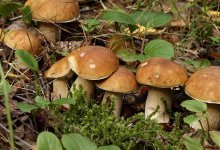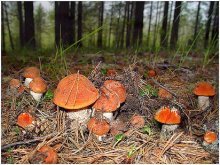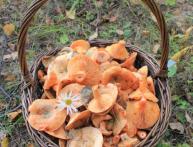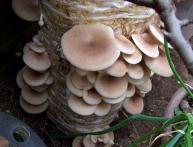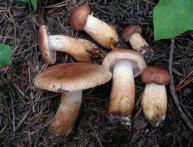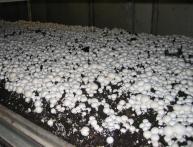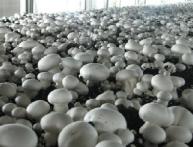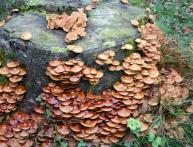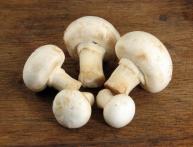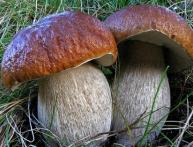What and how to grow mushrooms in the countryside on your own
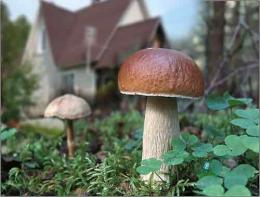
Working on a plot of land in summer and autumn takes up a lot of time from the owners. They cannot always choose a day and go to the forest to pick mushrooms.
However, those who like to tinker in the beds can grow mushrooms on one's own. Those mushrooms that have accumulated considerable experience in cultivating them and the more capricious forest mushrooms are also suitable for growing on their own. Let's try to figure out what and how to grow mushrooms in the country in the summer.
Content:
- How to grow champignons in the summer at the dacha
- Growing oyster mushrooms, shiitake in the country
- Growing forest mushrooms on the site
How to grow champignons in the summer at the dacha
Champignons are one of the few types of mushrooms that are grown on an industrial scale. Almost 50% of all mushrooms cultivated in the world are champignons. In wild form, champignons are found both in the forest and in meadows and fields. These fungi develop well in places where livestock was previously grazed and the land contains a large amount of rotted manure.
Champignons prefer moist places with a high content of organic matter. Taking into account the fact that they practically do not need sunlight, it is not difficult to choose a place in the country for them. Having created a special soil, champignons can be grown under all fruit trees, tall berry bushes and even utility sheds.
Soil for champignons
To successfully grow champignons, you need to take care to create a bed with a high content of organic matter.For these purposes, it is a good idea to purchase some horse manure. If it is difficult to find, then cow dung will also work. For champignons, you must first create a special pile in which to place:
- 50 kg horse or cow manure
- 12 kg lime
- 12 kg gypsum
- 15 - 20 kg straw
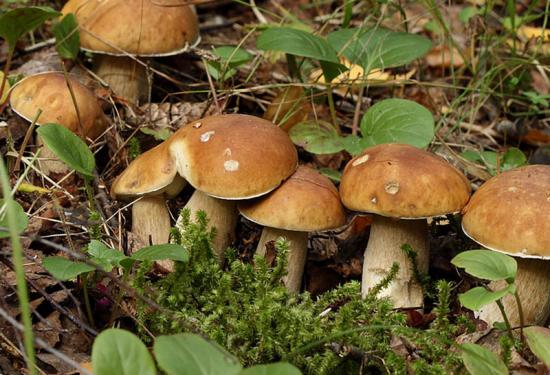
If food and other organic waste has accumulated, they can also be added to the pile. All ingredients are well compacted, watered over them, and covered with film. The resulting pile is left for a couple of weeks. The readiness of the soil will be indicated by the disappearance of the sharp ammonia smell. This usually happens after 15 - 20 days.
Preparing a bed for champignons at the dacha
After priming will be ready in the heap, a trench of the required width and depth of 30 cm is dug in the selected location. The trench is filled with the resulting composition. Everything is well watered. All that remains is to populate the mycelium in the garden bed.
Mycelium or champignon mycelium can either be purchased in a store or found in the wild and transferred to the country house. Since the cultivation of champignons has been going on for more than 100 years, it is very easy to find their mycelium on sale, which is grown in special conditions and takes root well.
The amount of mycelium required for 1 sq. m. is usually indicated on the package. Growing champignons with such mycelium is completely safe, which cannot be said about using wild mycelium.
Indeed, in the wild, although there are no deadly poisonous champignons, there are still inedible and even toxic species, for example, the yellow-skinned champignon. You can prepare mycelium on your own if you manage to find a place where edible champignons of the following types grow:
- white
- field
- double-ring
- garden
You need to carefully cut off part of the soil riddled with mycelium threads and transfer it to the site. The brought material is laid out on the prepared priming and cover with straw. It is advisable that the temperature outside at this time does not drop below + 20.
There is also a simple way to propagate champignons not by mycelium, but by spores. It is enough to bring caps from ripe champignon fruiting bodies. Place them on the selected and prepared place. It is important that it is sufficiently humid and warm. A few days later, they are removed.
Harvesting
If after a couple of weeks the mycelium threads become visible on the surface, then the colonization of the area was successful. White threads should be lightly sprinkled with fertile soil and moistened. As the soil dries, it needs to be lightly sprayed, while making sure that it does not become compacted from water.
If everything is done correctly, then after a month, the fruiting bodies of the mushrooms will appear on the surface. They are suitable for collection and consumption. Thus, it takes about 60 days to grow the first crop of champignons in the country.
Growing oyster mushrooms, shiitake in the country
Oyster mushrooms and shiitake mushrooms are also among the most popular mushrooms cultivated around the world. Shiitake fruits are not only eaten, they are used to treat and prevent a number of diseases, including cancer. Unlike champignons, these mushrooms in the wild they settle on trees, including dead ones.
Therefore, to grow them, you need to bring several trunks of aspen, poplar, and alder to the site. The diameter of the trunks should not be less than 15 - 20 cm. The trunks should be from healthy living trees. This does not mean that you need to cut down the tree. Those that are broken or knocked down by bad weather will also work.
The prepared trunk is sawed into logs up to 0.4 m long. 10 - 20 holes need to be made across the entire surface, up to 4-5 cm deep and 2-3 in diameter. The holes are placed evenly on one side. They will later contain fungal mycelium. Oyster mushroom and shiitake mycelium can be purchased at the store.
After filling with mycelium, the hole is covered with moss. If the pieces of mycelium are small, then the holes for them need to be small, and after filling they are simply covered with beeswax. The chocks themselves need to be buried in the shade of trees or bushes, buried 10-15 cm into the soil.
The place to place the chocks should be shady and moist. Taking into account the fact that the mycelium on the chocks will develop for quite a long time, everything needs to be prepared in April, when the air temperature will be + 15 degrees. Even if the temperature sometimes drops, this is not a problem for the mycelium of oyster mushrooms and shiitake.
It is important to moisten the logs throughout the entire period. The mycelium grows for about two months, and after 90 days the first harvest can be expected. Chocks infested with oyster mushrooms or shiitake mycelium can bear fruit for 3 to 6 years. Using similar technology you can grow and forest mushrooms.
Growing forest mushrooms on the site
To grow forest mushrooms in the country, you need to take into account such a phenomenon as mycorrhiza. It means that for successful harvesting, the presence of one or two forest trees on the site is important. Porcini mushrooms successfully coexist with oaks, pine trees, and birch trees. For boletuses and boletuses, trees of the appropriate species are needed.
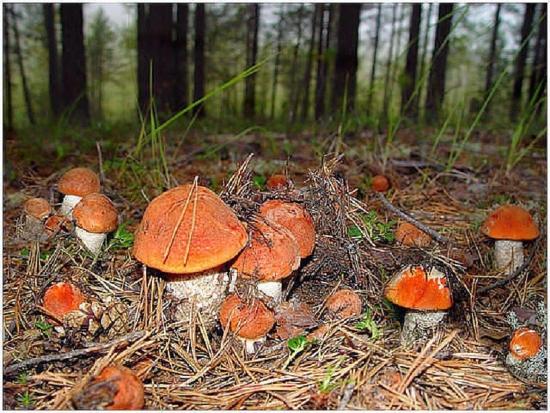
From the trunk circle of a tree with a diameter of 1.0-1.5 m, carefully remove the top layer of soil at a depth of 10 - 15 cm. Sprinkle everything with a 2 cm layer of compost.Buy mycelium from the store and lay its pieces on top of the compost. They do this so that the packaging is enough for one tree. The mycelium is covered with removed soil.
After this, 50 g of sugar is dissolved in a bucket of water and this mixture needs to be poured into 2-3 buckets under one tree. Pour the mixture carefully so as not to wash away the soil. In year landings The mycelium of forest mushrooms does not require special care. A layer of straw and moss laid under the tree will help maintain moisture and protect from drying out.
You can expect a harvest of forest mushrooms only next year. With the onset of summer, the planting site needs to be moistened regularly. This is especially important during periods of lack of natural precipitation. If everything is done correctly, then soon the fruiting bodies of porcini or other forest mushrooms will appear on the surface of the earth.
For another three to four years they will grow in this place every summer. After which you need to repeat the process of colonizing the area with mycelium. In addition to the methods described above, you can try to grow mushrooms in a simple way through spores. To do this, the caps of edible mushrooms need to be laid out on a moist, fertile plot of land.
Large caps can be broken into pieces. A few days later, the remaining caps are removed. And the place where they lay is carefully and regularly moistened. Next year watering continue and in the middle of summer those mushrooms whose caps were laid out should appear in this place.
Video about growing mushrooms in a summer cottage:

